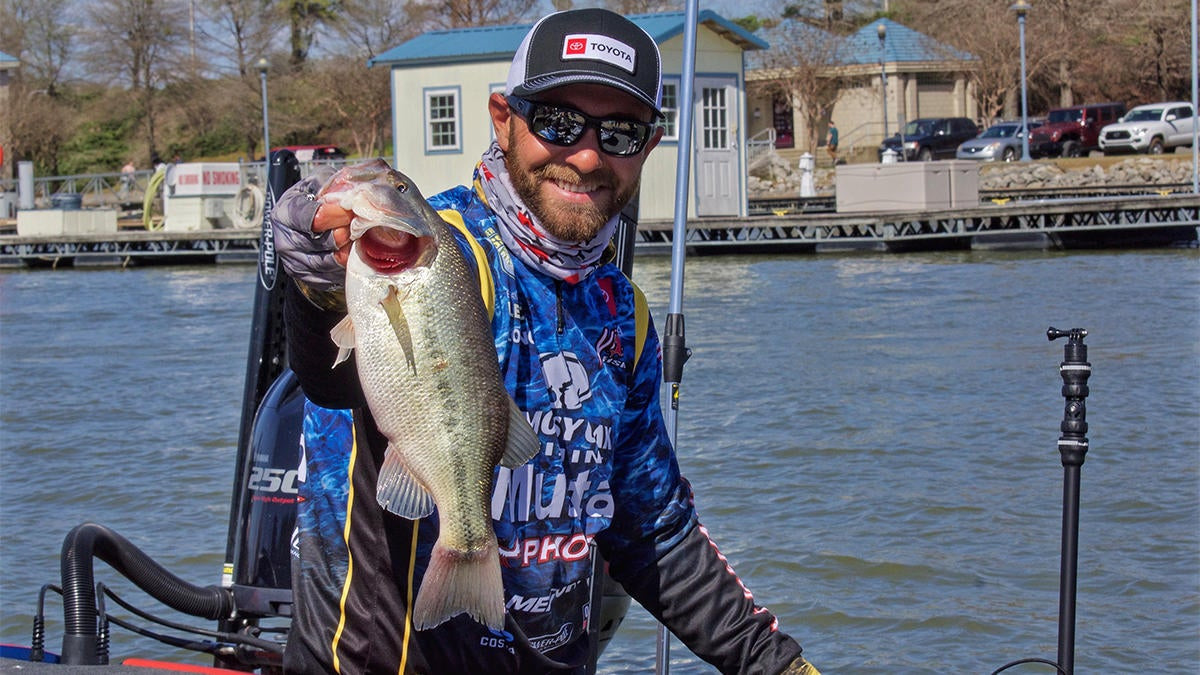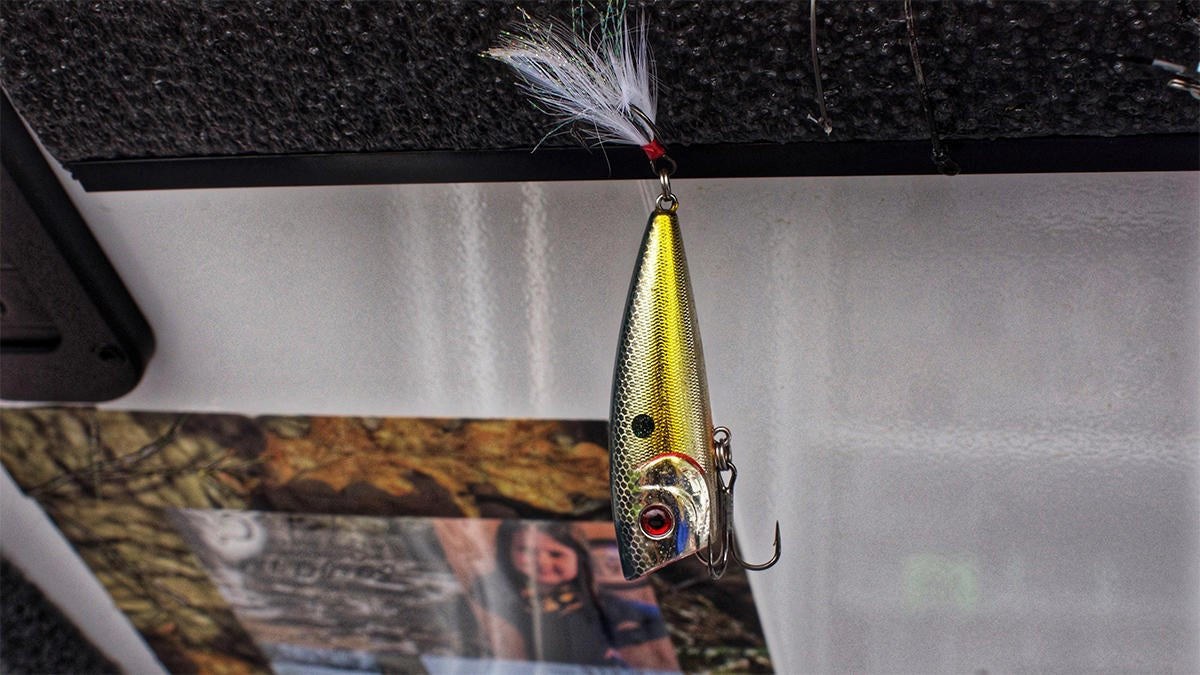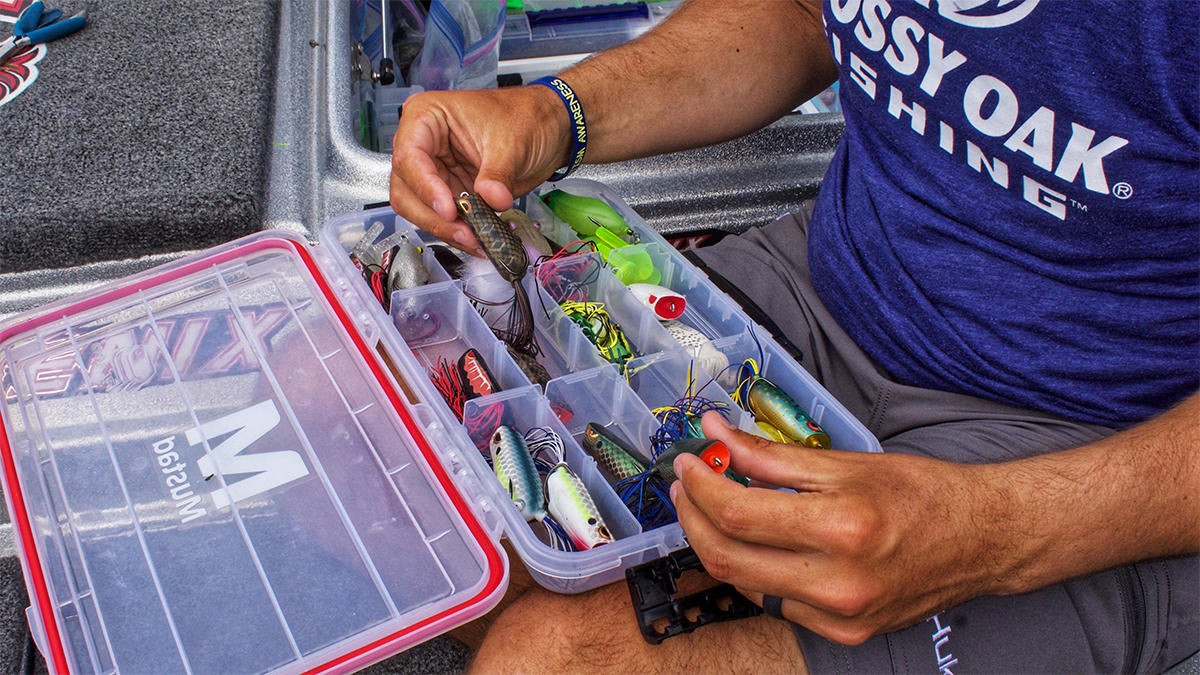Largemouth bass guarding fry, or fry guarders as they are often referred to, present a unique opportunity to anglers and is something to be aware of whether the fish in your area are finishing spawning or just getting started. As bass leave their spawning beds they often remain in the area in the immediate aftermath and are still receptive to shallow-water techniques.
There are several ways to target bass guarding fry but few as effective and arguably none more fun than using a topwater lure. Professional angler Brandon Lester loves targeting fry-guarding bass with topwater techniques and has employed this pattern with success at the highest level.
We took a deep dive with the Team Toyota pro on this productive shallow-water pattern to help you catch fish as they move past the spawn.
Understanding bass guarding fry
Newborn bass less than two inches are considered “fry” and adult bass commonly stay in the area to protect the young of the year after they are born. Understanding and knowing how to target these fry guarders is something every bass angler should have in their arsenal.
Much like bedding bass, fry guarding occurs during a narrow window but it happens in every lake across the country. It didn’t take long when talking to Lester to realize he has an acute understanding of fry guarding bass and his experience has taught him the nuances of targeting fish in this phase of the spawn.
“A bass guarding fry acts very similar to a bass on a bed but their ‘circle’ gets a whole lot bigger,” Lester said. “Instead of a three- to five-foot spawning bed with one little sweet spot, a fry guarder might roam a 20-foot area. And just like spawning fish, their moods differ from fish to fish. Some are aggressive and you’ll see them come from a long way to eat your bait while others are super docile.”
To locate bass fry and the adults keeping tabs on them, Lester looks for traditional spawning areas; sheltered banks in small pockets or the very back of a creek where bass can find solace. But instead of looking for an actual spawning bed, Lester focuses on some type of cover near empty spawning beds.
“Newborn bass are on the menu for practically everything,” Lester explained. “Other species of fish, birds, frogs… everything in the water eats fry. I guess that’s why it seems they are always near some kind of cover whether it’s grass, bushes, laydowns or a seawall. They want to be next to something, not just roaming open water.”
It has been said only male bass stay in the shallows to protect fry, but Lester doesn’t agree. The even-keeled Tennessean believes there is no such thing as a sure thing in nature and each fish is an individual.
“I don’t trust the old logic that says it’s always the male who stays back and protects the fry,” Lester said. “I’ve caught bass up to 7 pounds guarding fry that looked a whole lot like spawned-out females to me. I think there is a lot we don’t understand about bass and nature is filled with exceptions.”
Two key topwaters
When Lester knows there is a good chance he’ll be faced with bass guarding fry on a fishery, he leans on two different topwaters that he rotates through based on the cover present; a popper-style bait and a topwater frog. These two topwaters allow Lester to cover water while probing shallow spawning pockets for protective parental bass.
“Fry seem to spend most of their time ‘up’ in the water column,” Lester explained. “Knowing fry spend the majority of their time no deeper than a few inches below the surface, I feel like a topwater perfectly mimics something messing with them. I don’t know if adult bass see a topwater near their fry as a bluegill or a frog or what, but I know they don’t like it.”
When fishing mostly open water like sand, clay and gravel banks or fishing over the top of submerged vegetation Lester’s first choice is a Booyah Boss Pop. He swaps out the hooks for No. 4 Round Bend Mustad Treble Hooks and prefers to add a feathered treble for his back hook.
Lester tips his cap to the old school and throws a popper on 20-pound monofilament, a 7-foot medium heavy rod and a moderately fast 7:3:1 reel. Monofilament has some stretch to it and allows a bit of forgiveness when using a small, treble-hooked topwater like a popper.
If Lester is fishing around heavy cover or needs a weedless option to skip under overhanging limbs, docks or in and around heavy vegetation he opts for a SPRO Bronzeye Poppin’ Frog 60. Lester rigs his frog on a 7-foot, 2-inch heavy-action rod with the same 7:3:1 reel as his poppers but tied to 50-pound Vicious No Fade Braided Line.
What Lester likes most about both of these topwater options is he can fish them extremely slow, imparting action on the lures while keeping them in the same small area. Whether it’s a key piece of cover, underneath a dock or on a shade line Lester moves his bait at a lethargic pace.
“When I’m fishing for bass guarding fry I want something I can keep in front of the fish for a long time,” Lester said. “Whether I’m slowly twitching a popper near a ball of fry or walking a frog in place near a piece of cover I feel like the slower the better with a fry guarder. I feel like it aggravates them into biting more than anything; kind of like a bed fish.”
The last piece of advice Lester offered is to always have a follow-up soft-plastic bait rigged when fishing topwaters around the spawn. Whether bass are guarding fry or on their spawning beds, they’ll often swipe at a topwater without getting the bait.
Lester keeps a spinning rod outfitted with a wacky-rigged stick worm rigged on a No. 2 Mustad TitanX Wacky/Neko Rig Hook on his front deck at all times. If he sees a bass follow or miss his topwater, he throws the wacky rig right back to them and more often than not gets them to eat his follow-up offering.
As the bass in your area move off their spawning beds this spring and in years to come, remember these tips from Lester. Understanding the fry-guarding phase will make you a better angler and this two-prong topwater approach will help you catch bass during the immediate post-spawn funk.













